Previously, I’ve covered some of the snakes you may encounter during your travels. These slithery, fanged little meat tubes are not the only type of fauna you need to watch out for: the insects are far more numerous.
Centipedes
Centipedes, those little arthropods with way too many legs, can be found all over the world, save for maybe Antarctica; more than 8000 species are thought to exist. All of them are venomous, although only a minority are in any way dangerous to humans, and eat all kinds of prey they can catch.
In Hua Hin, there’s one species you need to watch out for: the Scolopendra subspinipes, better known as Chinese Red Head Centipede, Vietnamese Centipede, Jungle Centipede and various other names due to its wide geographical range.

Don’t let this little bugger bite you. Ryan McMinds
This phobia-inspiring spawn of Satan can grow up to 20 cm in length, and eats all kinds of prey it can overwhelm with its size and venom. Those include small reptiles and even mice for the bigger specimens. They behave aggressively if they feel the slightest bit threatened, and sometimes attack even without any provocation. Be careful around these bugs.
Natural behavior for this species is to hide in dark, small spaces where they either take shelter from the elements, or wait for a chance to jam their powerful jaws into unsuspecting prey. You probably have many suitable hiding places for Subspinipes around your house - your shoes, for example.
Getting bitten by this species means severe pain, lasting for 4 to 5 days, along with bruising and swelling of the bite site. Bites on the extremities are not usually fatal, but getting bitten in the head can be life-threatening, especially for children and the elderly. There’s always the risk of an allergic reaction, too.
First aid for a bite consists of either hot or cold - many sources recommend rinsing the bite site with cold water, then applying ice if the victim can bear it. This is supposed to constrict blood vessels to limit spreading the venom. Others claim that applying hot water - as hot as the patient can handle, but obviously not hot enough to cause burns - should provide a quick pain relief.
In any case, if you get bitten, get to the hospital as quickly as possible.
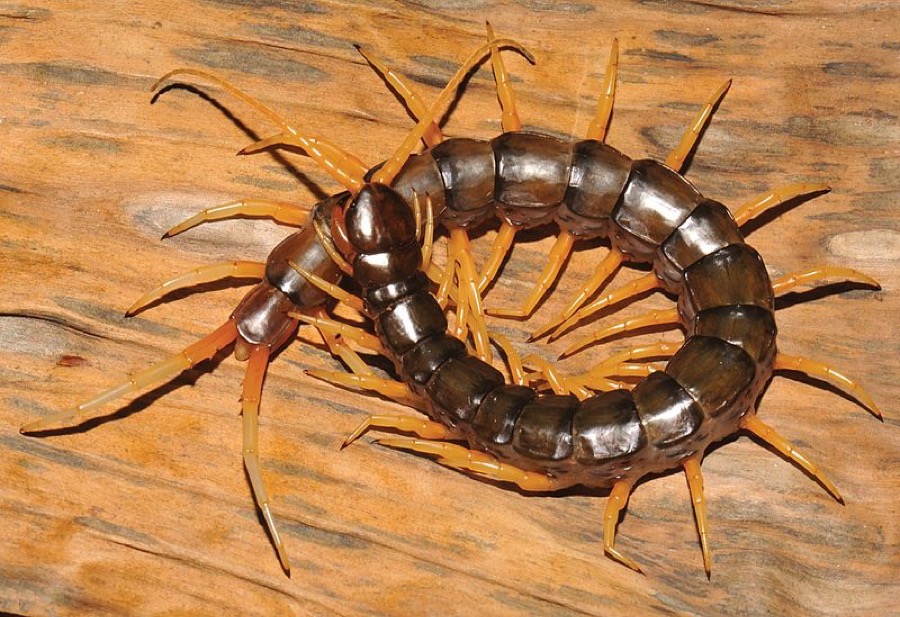
The water-loving cousin of the Red Head. Wikimedia Commons/Zookeys
Final note: there are other species of centipede found in Thailand too, such as the recently-discovered Scolopendra Cataracta, or Waterfall Centipede (see picture above), the only known swimming centipede. They all look pretty much the same, and may cause severe pain if they happen to bite. It’s best to approach any centipede with caution. Thais usually just smash them dead on sight - I’ll leave it up to you to decide if you want to follow suit.
Spiders
Next on our list is some delights for all you arachnophobes out there.
Black Widow (Redback)
The famous Black Widow spiders are found all over the world, save for the coldest regions. 31 species of widow spiders are currently recognized. The species most commonly found in Thailand is also one of the more venomous in the family: Latrodectus hasseltii, or the Redback Spider.

Redback spider, waiting for its next meal. Wikimedia Commons
Like many of the world’s most venomous fauna, this species also has its origin in one of the most remote, hostile and terrifying places on Earth: Australia. The spiders were fairly contained in this small corner of the planet until the British came along and spread it all around South-East Asia.
A Redback spider, when feeling threatened, may bite and inject its victim with neurotoxic venom. Symptoms often start with only minor local pain, which develops into more severe pain, goosebumps and local sweating. In some cases, the symptoms turn more severe within 24 hours: vomiting, headache, sweating chest pain and more. Seek medical attention as soon as you can if you get bitten.
While undoubtedly painful, a Redback bite is fortunately only very rarely fatal. Nonetheless, infants, young children and the elderly are at a greater risk. Small children may not be able to tell that a spider bit them - always bring your child to the nearest hospital if you see any of the following symptoms:
- Red rash that seems to disappear when applying slight pressure
- Crying that just won’t stop
- Muscle aches in children >4 years old
It’s a good idea to teach your children to never touch any spiderwebs and stay away from any spiders.
Huntsman spiders
Now this is a real treat to any arachnophobe: the largest spiders in the world!
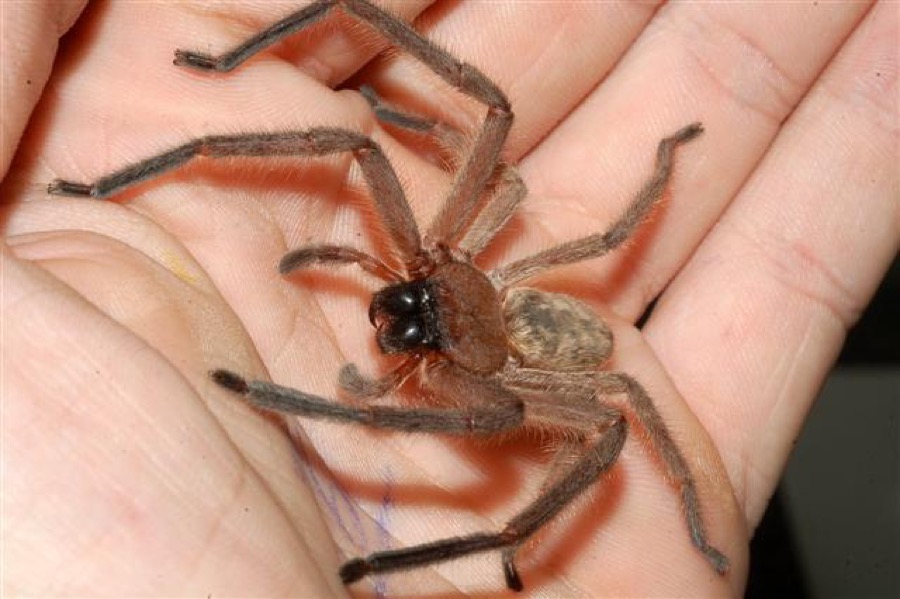
A huntsman spider, showing off its size. Wikimedia Commons
Several Huntsman species live in Thailand, and many of them can grow up to the size of a grown man’s hand. Unlike most spiders, they do not build webs, but instead rely on their speed and agility to catch prey. They can often find their way inside houses and other dwellings in search of delicious roaches and other spidey cuisine.
They are very fast runners and can jump for quite a distance. They will reflexively hold onto whatever they’re walking on if they’re about to fall, making it difficult to shake off if one decides to climb up your pant leg.
Despite their frightening appearance, their venom is not dangerous to humans. Some discomfort and pain may ensue if you get bitten, but it’s very unlikely to require medical attention. However, be aware that allergic reactions may occur if you’re unfortunate enough.
Scorpions
Scorpions, those little curvy-tailed, scissor-clawed buggers are actually related to spiders. On top of this, all scorpion species are venomous - luckily, only handful of species are dangerous to humans.
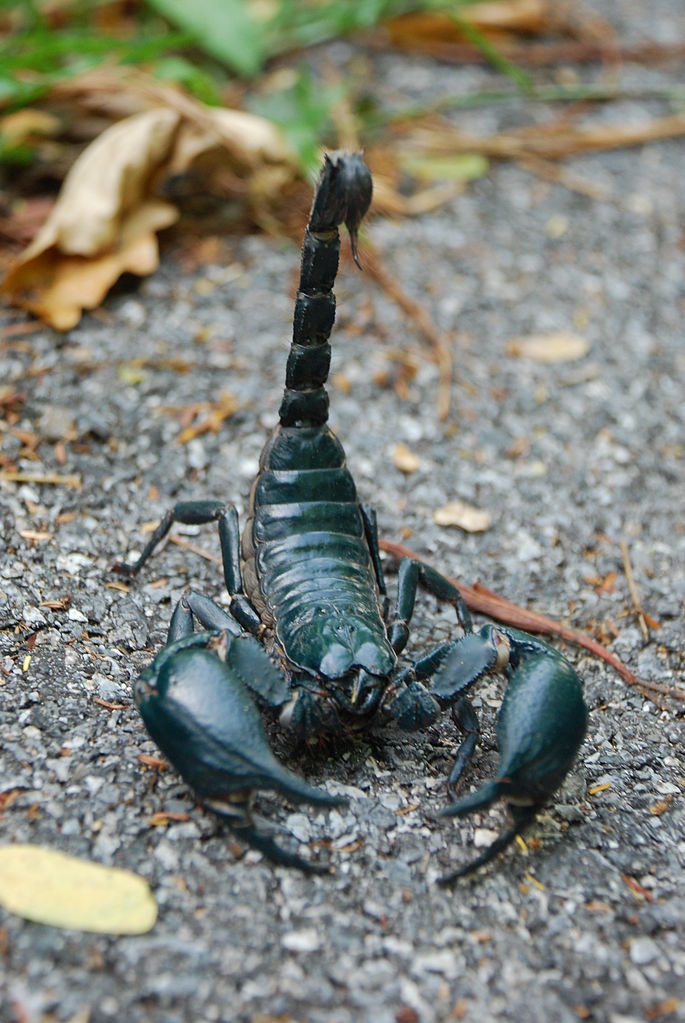
Asian forest scorpion, observing the camera. Wikimedia Commons
In total, 18 different species of scorpion are known to live in Thailand. While they mostly inhabit the forests, riverbanks and other great outdoors, they are very adaptable little creatures and can sometimes find their way inside houses. Scorpions are nocturnal creatures, so your best chances of seeing one are after dark. In fact, people sometimes get stung by scorpions when tucking into their beds at evening, disturbing the scorpions that have found a comfortable hiding place there.
Thai scorpions may grow up to 17 cm long, which is quite impressive for an arachnid. They are undoubtedly scary-looking, but fortunately their venom is not very potent - it’s comparable to a bee or wasp sting. Scorpion sting can be painful, but only life-threatening if you happen to be allergic.
Treatment for a sting consists of cleaning the sting site and applying something cool onto it to relieve the pain and swelling. If the pain becomes unbearable, seek medical attention immediately.
Ants
Next up on our list are the least harmful, but most annoying (and somehow most fascinating) insects: ants!
Ants being probably the most populous family of living things on Earth, it comes as no surprise that there are several species of them in Thailand too.
Sugar Ants, or Sweet Ants
These really teeny-tiny ants (scientific name: Tapinoma melanocephalum) can be a real annoyance. They are found everywhere, and are hyper-efficient at locating food sources - anything from potato chips to week-old leftovers to empty beer bottles goes. When one of them finds something delicious, rest of the colony will soon follow.

Tiny little sugar ants, feeding on an apple. Wikimedia Commons
The annoying thing about these ants is that they bite - and they bite aggressively! While not in any way dangerous to humans, the constant biting gets really irritating quickly. I once forgot a coffee cup with a few drops of cappuccino remnants in my rental car. The ants soon appeared, and made their presence known quite soon after I started driving - itchy, prickly ant bites everywhere in my legs!
It took a few hours to completely clean the car and squish as many ants I could. Lesson learned: leave no edibles in your car or under your motorcycle seat - ever!
The ants can be easily recognized by their really small size and the fact that they simply don’t care if you wipe out half of their marching column with your hand - the rest will just keep soldiering on. Thus, any sugar ant problem indoors can be handled by first taking out all the trash and other ant food, and then wiping off any ants with something like a damp rag.
Fire ants
Fire ants, of the genus Solenopsis, are found in many parts of the world. Their name comes from the painful bite they can inflict on humans and other unsuspecting prey.
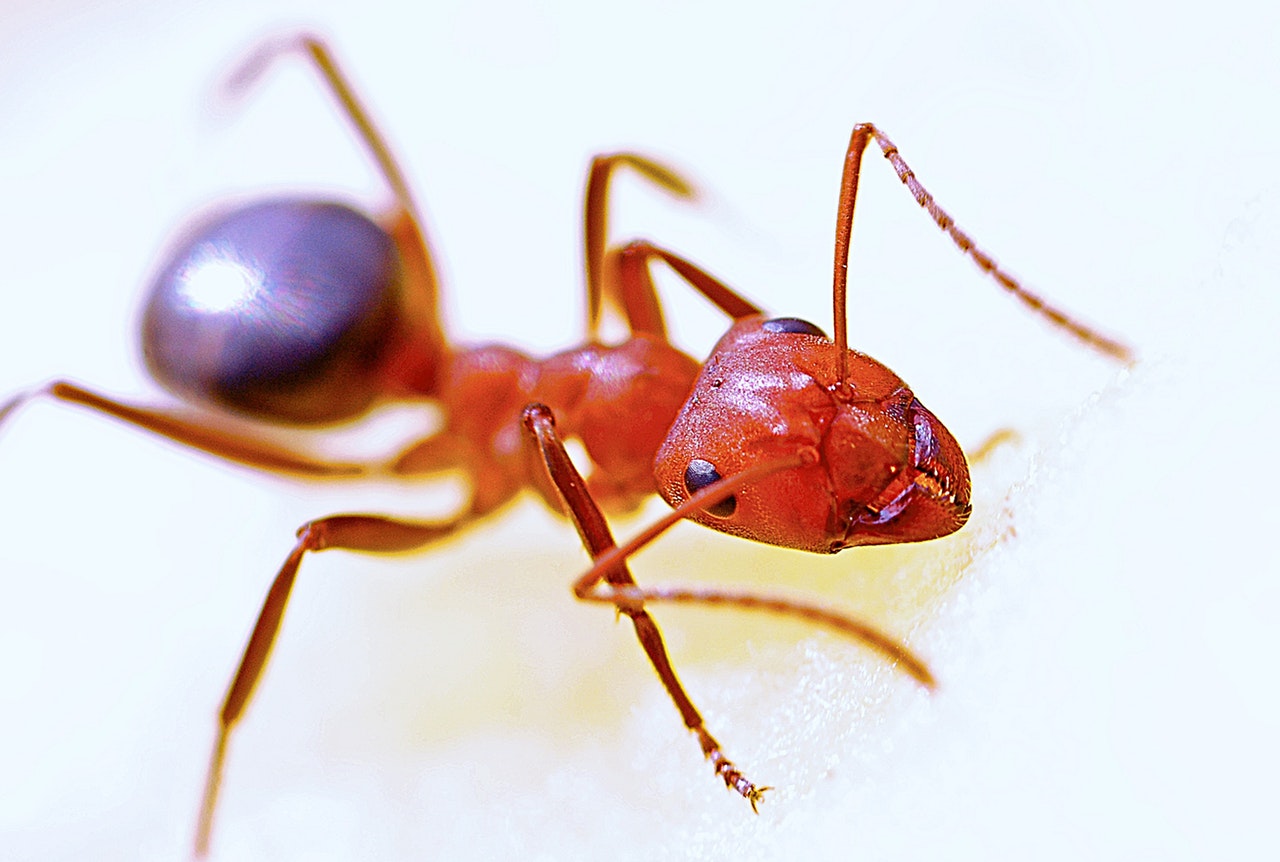
Fire ant close-up. He looks excited to bite the camera.
Their bite is a little unusual: at first, there is a sharp pain, which disappears quite soon for a few hours. Then, the itching begins. If you’re unfortunate enough to have been bitten by many fire ants, the itching can drive you crazy!
These ants are carnivorous, and love to eat stuff like eggs, chicken, scraps of meat, and anything with protein in it. You can be sure to find them en masse near the trashcans outside. They are easy to recognize by their reddish-brown color and rather slow movement.
If the ants become a problem, it’s best to notify the hotel staff - they’ll send someone over to poison them. These ants are smart enough to recognize danger if they see one of their comrades getting killed, avoiding the dangerous area afterwards. This makes them more difficult to get rid off than the sugar ants.
Mosquitoes
And now, the most dangerous insects in the world - mosquitoes!

A female mosquito, having a dinner.
Yep, mosquitoes kill more people world wide every year than snakes or other humans. While harmless by themselves, the death toll comes from the nasty diseases carried by mosquitoes: malaria, dengue fever, zika, yellow fever and several more.
In Thailand, the main threats are malaria and dengue fever. To a lesser extent, Japanese encephalitis is also a concern.
These diseases start with similar symptoms - high fever, joint pains, headaches. As common sense dictates, if you experience any of these symptoms, seek medical attention as soon as possible. All of these diseases can be life-threatening if not treated properly. Even with treatment, they are really nasty illnesses that are going to ruin your vacation at the very least.
Malaria and Japanese encephalitis are most common in the rural areas and jungles, and much less in the cities. Dengue is a different beast, and is more of a concern in urban areas.
Vaccines are available for malaria and Japanese encephalitis. If you’re planning to head out to the countryside and off the beaten path, it’s recommended to get these shots. Anti-malarial medicine is also available in the pharmacies around South-East Asia.
A dengue fever vaccine has recently been developed and entered clinical trials, but there’s a catch: it requires you to have suffered through dengue once before. Getting the vaccine without previous exposure to the disease makes it a lot worse, even life-threatening, if you happen to catch it.
Mosquitoes are common in Thailand (and in fact, everywhere in the world). It’s pretty much guaranteed that you’ll get multiple mosquito bites during your vacation. Don’t let the mosquito-borne diseases scare you - chances are you won’t catch any during your trip. Risks are higher the longer you stay, of course, and most malaria/dengue cases happen to expats or locals instead of tourists.
It’s still wise to invest in some DEET mosquito repellant (available from pharmacies) and perhaps some mosquito netting.
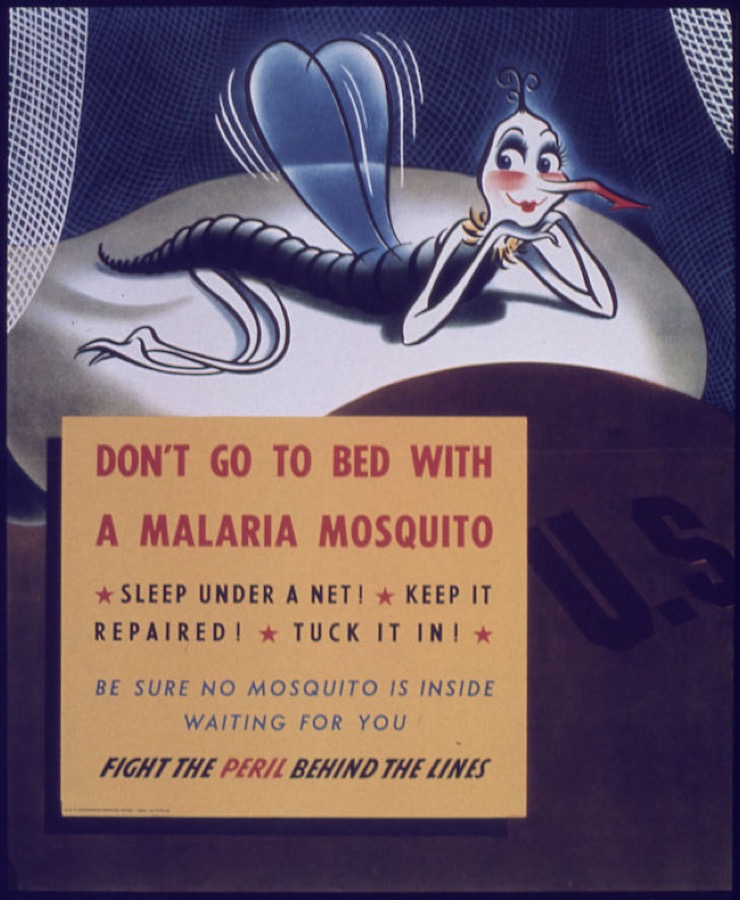
Good thing to keep in mind. Sweet dreams.
Conclusion
You may have noticed a common theme throughout the post above: with the exception of mosquitoes, the highest threat with insects is not their venom by itself, but the possible allergic reactions resulting from a bite.
If you have any insect-related allergies (or any allergies for that matter), do the smart thing and always, always carry an EpiPen or similar device with you - it may save your life.
With mosquitoes, there’s always the risk of a nasty mosquito-borne illness, like dengue or malaria. You can reduce the risk considerably by applying mosquito repellant on your skin whenever heading out at evenings or nights when the mini-vampires are most active.
One last tip - check out HealthMap for real-time data on the current status of infectious diseases, including dengue, malaria and Japanese encephalitis.

Like it? Pin it!